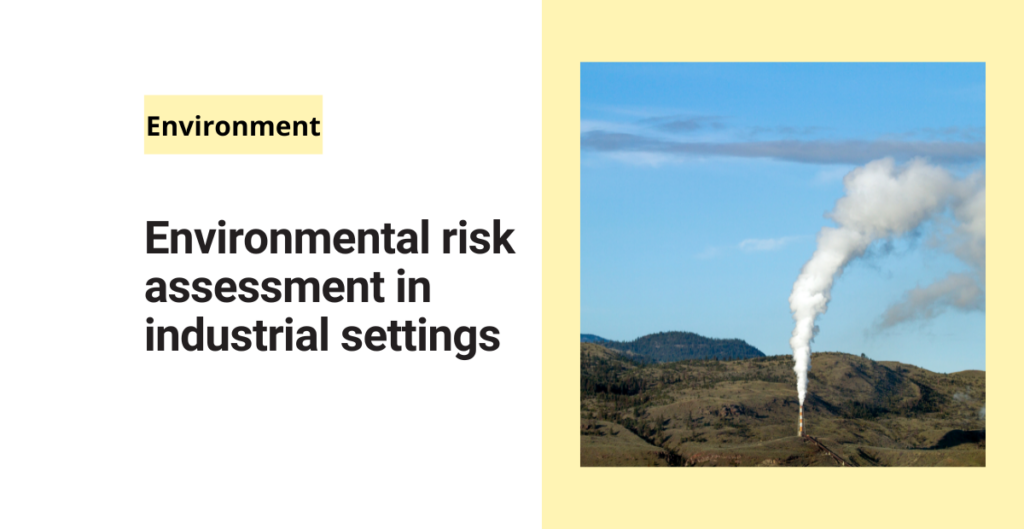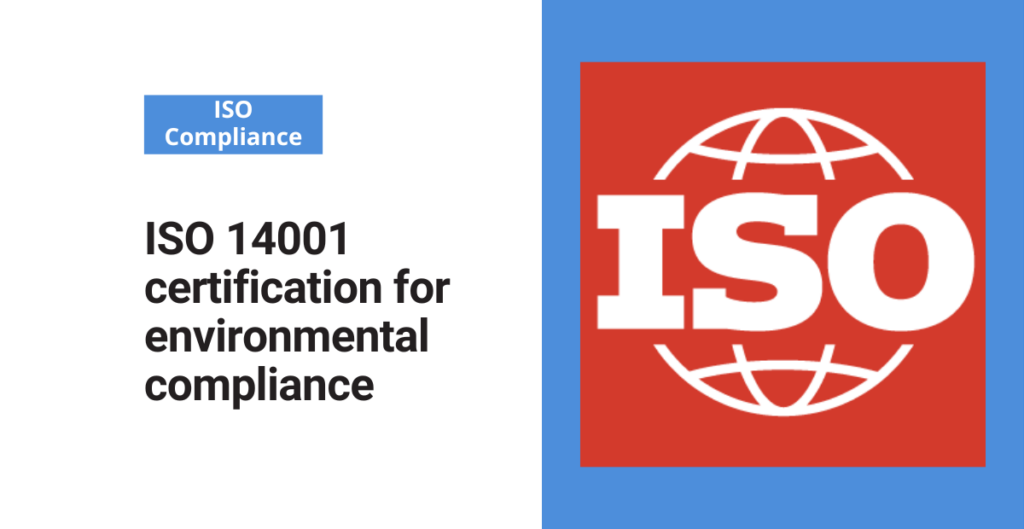Our EHS experts interview with Abby Holovach explores the ins and outs of environmental program management. With years of experience in environmental compliance, Abby shares her insights and best practices for managing this often-overlooked area of workplace health and safety performance.
About Abby Holovach
Abby Holovach is the Owner and Founder of Vibe Environmental, an EHS consulting and training company based in Fort Worth, Texas. Through Vibe, she offers a mix of services, ranging from customized training sessions to regulatory inspections, compliance gap assessments, and full program development. Abby also serves as a freelance instructor for the University of Texas at Arlington’s Environmental Training Institute.
She got her start in the EHS field through regulatory work. Her first role was as an Environmental Investigator with the Texas Commission on Environmental Quality (TCEQ). There, she conducted compliance inspections of solid and hazardous waste facilities. This set the foundation for her understanding of environmental regulations. It also taught her the importance of communicating compliance requirements in a clear, helpful, and accessible way.

Throughout her career, Abby has worked across several industries, including environmental services, industrial cleaning, hazardous waste transportation, oil and gas remediation, heavy equipment, and government/military. She has supported everything from smaller regional operations to corporate-level programs spanning 100+ facilities. That diversity of experience has shaped her approach and ability to scale solutions based on the size of the company, the industry they’re in, and the level of support they need.
Environmental Program Management
Abby Holovach has extensive experience designing, managing, and improving environmental compliance programs in both the public and private sectors. Just some of her past projects include:
- Management of a corporate-wide environmental compliance program for over 125 facilities across Texas and Oklahoma
- EHS and Waste Director at a spills/hazmat company
- Spills, Tanks, and EMS Program Manager at a joint reserve military installation
In each role, her goal has been to create environmental programs that are proactive, sustainable, and fully aligned with both regulatory expectations and company operations. She’s passionate about helping teams move from reactive compliance to a culture of environmental awareness and ownership.
Here are her insights on the best ways to approach environmental program management as an EHS professional.
1. What are the main challenges that come with managing a safety committee and making sure it stays active and purposeful?
Trust. As a leader, you have to earn the trust and confidence of your safety committee members. They need to believe that you are competent and knowledgeable, and they need to know that you have their best interests in mind. Be open to their ideas and be willing to listen. Never make it about blame. Celebrate positive behaviors whenever possible.
1. For someone new to managing a site’s environmental program, what would you say are the first three things they should assess or understand?
If you’re new to environmental program management, the first thing I always recommend is taking a step back and getting a clear lay of the land. Environmental compliance can feel overwhelming at first, but starting with these three core areas will set you up for success:
- Understand your site’s regulatory footprint: Before anything else, know which federal, state, and local environmental regulations apply to your operations. That means reviewing the types of materials used and waste generated, onsite activities (e.g. fueling, painting, washing, storage), and permits, plans, or registrations in place. Look for things like stormwater permits, SPCC plans, hazardous waste generator status, air authorizations, and tank registrations. This gives you a compliance baseline and requirements list.
- Identify key risks and compliance gaps. Once you understand the requirements, assess whether your site actually meets them. Are your plans up to date and site-specific? Are your hazardous waste drums labeled correctly? Are employees trained and following procedures? Are inspections and records maintained? It’s totally okay if the answer is “not yet!” Your goal here is to identify where the gaps are so you can prioritize fixes and avoid enforcement issues.
- Build relationships with your site team. Environmental compliance doesn’t work in a vacuum. It’s essential to connect with the people who actually perform the work, including maintenance, operations, warehouse staff, etc. Learn how they interact with materials, equipment, and waste. Get their input on what’s working or not. The more you involve your team in compliance efforts, the stronger your program. Plus, you’ll gain valuable insights you won’t find in any SOP or permit.
Starting with these three steps (regulatory scope, risk assessment, and team engagement) sets a strong foundation. From there, you can layer on things like training, audits, and system improvements. And don’t be afraid to ask questions or bring in outside help when needed. None of us knew everything on day one, and environmental compliance is always evolving. I always say, “Environmental compliance takes a village!”
2. How do you handle resistance from operations or maintenance teams when trying to implement or enforce environmental requirements?
When I encounter resistance (which is totally normal!), I’ve found that the most effective approach is to lead with curiosity and comradery, versus confrontation or accusations. I don’t show up trying to be the compliance cop. I even try to avoid carrying a clipboard, which carries its own stigma. Instead, I ask questions and try to understand where the team is coming from.
I ask things like: “Can you walk me through how you usually handle this,” “What’s worked for you before,” or “Has anyone actually explained why this rule exists?”
I’ve found that resistance is often about frustration, misunderstanding, or trying to do the job the fastest way possible and not about defiance. Taking time to truly understand gets you a lot more respect and participation.
But a big component is being genuine and having a sense of humor. People can tell right away if you’re being performative or just quoting regulations. If you show up as a real person, someone who’s there to help, who doesn’t pretend to know everything, and who can laugh at the occasional awkward moment, it totally changes the energy. Humor breaks the ice, especially in high-stress or skeptical environments. It helps people let their guard down and makes the conversation feel human instead of punitive.
Compliance becomes a lot less painful when there’s mutual respect, practical solutions, and an integrated sense of brevity.
Handling Environmental Compliance
3. How can EHS folks align their site’s compliance program with broader ESG or sustainability goals without losing focus on core obligations?
Traditional compliance work (spill plans, reporting deadlines, etc.) is critical for preventing incidents and protecting people. But ESG and sustainability challenge us to ask ourselves not just whether we’re compliant but whether we’re creating value and reducing risk long-term.
The way to align compliance and continual improvement without losing focus is to anchor sustainability goals in your compliance work.
For example, if you’re managing hazardous waste, look at opportunities for waste reduction or substitution. Consider something that supports both RCRA compliance and ESG waste minimization goals. Or if you’re maintaining stormwater permits, maybe there’s a way to incorporate nature-based BMPs or track pollutant reductions as part of broader water stewardship.
The key is to do compliance well and use that solid foundation to inform and drive sustainability metrics. The best compliance programs are those that evolve, not just to meet regulations, but to reflect where our companies and communities are headed. Sustainability gives us a chance to lead that evolution, without ever letting go of the core responsibilities that got us here.
4. Can you share a strategy or method that’s helped you make your compliance documentation more audit-ready or inspection-proof?
One strategy that’s made a huge difference for me in making compliance documentation truly audit-ready is building what I call a “real-time readiness” system. Instead of scrambling before an inspection or audit, I treat every month like someone could show up tomorrow, which, let’s be honest, they often do!
Here’s how I do it:
Step 1: Create site-specific compliance binders or shared folders that mirror the major regulatory programs (e.g., SPCC, Stormwater, Hazardous Waste, USTs, etc.). Each section includes:
- Permits, registrations, or plans
- Corresponding inspection checklists (either pulled straight from the regulators’ webpage, or checklists I’ve created directly from the applicable regulations)
- Required training logs/documentation
- Any other required, supporting, or backup information
That way, I’m not digging through emails or hoping someone remembered to save a PDF. This always gives the regulators “warm fuzzies” and builds that trust and confidence.
Step 2: Standardize documentation across sites or departments. When managing multiple sites, I use consistent formats for logs, labels, and forms. That makes it easier to train staff, spot missing records, and walk an inspector through the system with confidence. Even something as simple as using the same folder naming structure and checklists across facilities saves a ton of time. Including photographs or diagrams of “what right looks like” has proven to be very helpful when issuing out standardized SOPs or policies/procedures. That way, there’s no question about what you require or expect.
Step 3: Build it into routine habits. Rather than relying on last-minute prep, I do a monthly “mini audit.” I check for missing signatures, expired plans, or incomplete training records. It takes 15 minutes and has saved me from a lot of last-minute stress and awkward conversations during inspections. I set calendar reminders to help stay on track.
Honestly, one of the best things I’ve done is involve the field teams in the process. If they know where the records go, and they understand why it matters, they’re more likely to help keep things updated and accurate.
Another great tip is to designate members of the team to accompany an environmental regulator during an inspection and prepare. Teach them what to say, what not to say, what binders to grab, who to call/notify, etc. This way, everyone’s on the same page, confident, and prepared to responsibly and successfully manage a surprise inspection.
In my experience, compliance documentation doesn’t have to be a fire drill. If you embed it into your regular workflow and make the system intuitive and accessible, it becomes part of the culture, not just a checked box. And when the auditor walks in, you’re ready to rock and roll!
5. How can an EHS manager effectively prioritize environmental compliance tasks when they’re stretched thin across multiple programs?
When you’re juggling a dozen competing compliance deadlines, the key is to work smarter by prioritizing based on risk, regulation, and reality. Start by asking yourself which issues could cause a fine, shutdown, or injury if you don’t handle it. This includes things like hazardous waste storage and labeling, permit deadlines, and spill response. This becomes your non-negotiables list. If these things slip, everything else becomes harder.
Next, I’d recommend using a visual tracking system. My personal preference is to create a master compliance calendar and dashboard that’s color-coded, deadline-driven, and easy to scan. It helps me break tasks into bite-sized chunks and delegate wherever possible.
And lastly, it’s important to aim for progress and not perfection. When you’re stretched thin, it’s better to have a “good” program that’s active and consistent than a “perfect” program that lives in a binder no one uses. I always ask myself: Is this something I can automate, template, or simplify? If I can create a checklist once and use it 20 times, that’s a win.
Don’t forget to let leadership and site teams know what you’re prioritizing and why. That transparency builds trust, and it also helps you make the case for additional support or resources when the time comes. When you’re pulled in different directions, prioritization isn’t about doing everything but about doing the right things first and building a system you can actually sustain.
6. When a site gets a regulatory notice or violation, what’s your advice on the best way to manage the response and prevent recurrence?
My number one piece of advice is to respond quickly, transparently, and with a plan. Even if the notice feels minor, or if you think it’s not entirely fair, your response sets the tone for your relationship with the agency going forward.
Start by reviewing the notice carefully. Then, gather your internal facts about what happened. Talk to those involved, review the site, and review documentation. If you reach out to the regulator for clarification, just remember that they appreciate a respectful, proactive attitude.
When you respond to a citation, be clear, factual, and organized. A good response typically includes:
- A summary of the issue
- A description of immediate corrective actions taken
- Any documentation or photos to support your fixes
- A plan for long-term prevention (policy updates, training, inspection changes, etc.)
- If something was misunderstood or misrepresented, you can absolutely clarify that, but always lead with a constructive tone, not defensiveness. Regulators want to see that you care about fixing the issue, not just checking a box.
Once you’ve responded, talk as a team about how the process failed and come up with a prevention plan. I often build in short-term audits or spot checks to make sure the fix holds. If the violation involves a systemic issue, I use it as a chance to level up that part of the program across other sites too.
7. At Vibe Environmental, what’s your approach to helping companies improve their compliance programs?
At Vibe Environmental, I help businesses cut through the noise of EHS regulations and build compliance programs that actually work. Whether I’m preparing a site for inspection, identifying regulatory gaps, or helping a team understand what permits they need, my focus is always on making compliance practical and approachable.
I also specialize in delivering training that sticks, whether it’s HAZWOPER, DOT hazmat transportation, RCRA, spill response, or PPE. I don’t believe in boring slide decks or one-size-fits-all sessions! My goal is always to connect with people in a way that helps them understand the “why,” not just memorize the rules.
What sets me apart is my background. I’ve been a regulator, an in-house EHS manager, and now an independent consultant. I’ve seen firsthand what works, what doesn’t, and how to bridge the gap between compliance on paper and compliance in practice. Vibe brings regulatory expertise, real-world insight, and a whole lot of energy to every project!
You can learn more on our website.
Resources for EHS Professionals
We asked Abby to share her go-to resources for staying current in the EHS field. Check them out below!
Networking and Professional Development
I’ve been an active member of the American Society of Safety Professionals (ASSP) for years and currently serves in several leadership roles. Their networking, webinars, and technical resources are amazing, and I really value the ability to learn directly from other professionals facing similar challenges.
I also co-founded DFW Environmental Pros, a free networking group for environmental professionals in the Dallas-Fort Worth area. We host meetups, share regulatory updates, and provide a space to swap ideas and solutions with peers from all kinds of industries.
More informally, I get a lot of helpful information from other EHS professionals sharing interesting stories, incoming regulatory updates, etc. on LinkedIn.
Abby’s Best EHS Advice
We also asked Abby what the best advice she’s received in the EHS field so far. Her response?
You won’t always have the answers. Know when to ask for help from others.
It’s easy in this field to get caught up in rules, deadlines, and technicalities (and yes, those matter!), but the reality is that compliance only works if people understand it, believe in it, and feel like they have a role in making it happen. Whether you’re writing a procedure, responding to a violation, or delivering training, you’ve got to meet people where they are, listen, communicate clearly, and build trust.
That advice completely changed how I approached my work. I stopped trying to “enforce” compliance and started focusing on building relationships. I started learning why teams resisted certain changes, what they needed to succeed, and how I could translate complex regulations into something real and actionable.
This doesn’t necessarily mean you have to be a social butterfly or extreme extrovert. It means showing people you do actually care by being reliable, consistent, trustworthy, and genuine.
It’s something I carry with me every day through my work with Vibe Environmental, and it’s at the heart of how I teach, consult, and lead. If you can understand both the people and the regulations, you can build a program that not only works but lasts.




